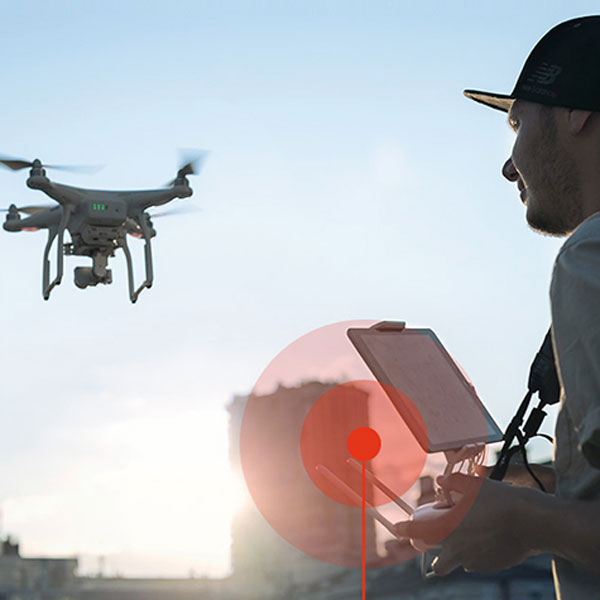Airspace Security
Airspace Security – Modern security requires a layered approach that keeps up with the evolution of drone technology. Sensors connect to our software, which detects, classifies, and protects against drone threats, including localizing the drone and its pilot. Passive and active countermeasures can be triggered, tailoring the defense mechanism to the severity of the threat.
Detect a Drone
Airspace Security’s RF Sensors are purpose-built for airspace security and collect hard data on drone activity in the airspace. They detect all kinds of drones and have a coverage range over over 1 mile in ideal conditions.
RF Sensors detect drones and remote controls by their radio frequency (RF) signatures. Commercial, hobbyist, and homebrew drones are detected, including the entire DJI product line.
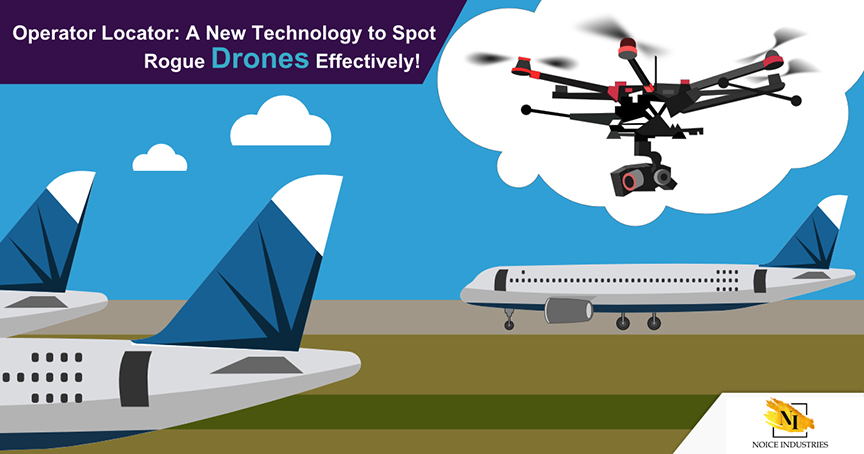
Advanced Video Analytics
Machine-learning video algorithms for detecting and locating the position of drones are key parts of the solution. Using feeds from high-resolution video cameras, Airspace Security software distinguishes between drones and other moving objects, and plots the position and flight path of a drone on map.
DroneV is a machine learning system and classification engine that recognizes drones of all kinds. Trained on millions of images and data points, it can distinguish between different drone models, and detect the difference between drones and other moving objects such as birds, planes, or other objects. DroneV signatures are continually updated via the cloud, enabling the Airspace Security system to be always up-to-date to protect against the latest threats.
It’s not enough to secure the airspace against drone-based threats. Airspace Security’s localization technology enables users to find the location of the pilot and drone, making termination of the threat much more practical.
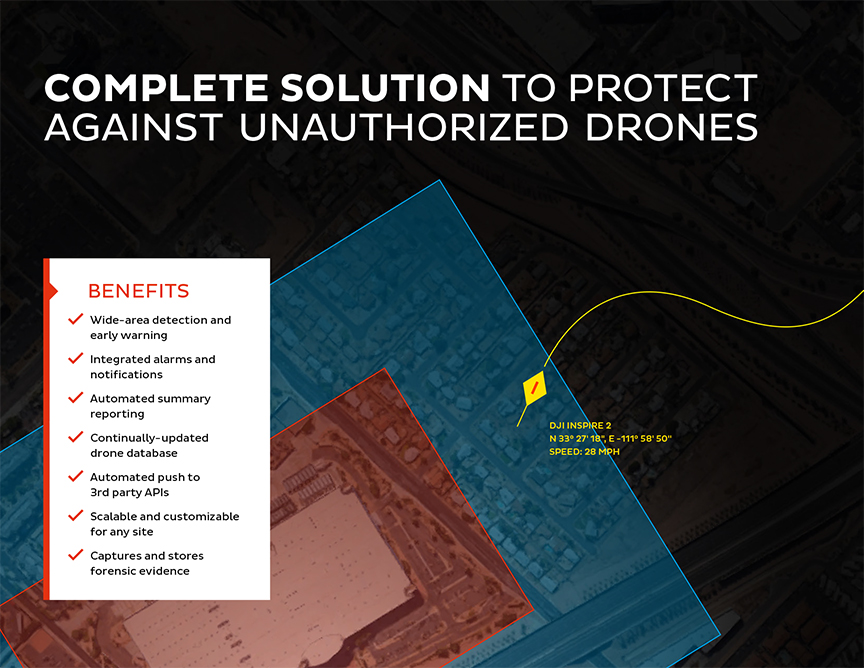
Reporting and Forensic Evidence
Sensors and integrated external video cameras record forensic evidence of drone intrusions. A combination of forensic data is automatically captured by the software, including drone manufacturer, model, time and length of drone activity, and video verification. Summary reports are automatically produced and available on-demand for easy analysis of the most critical airspace data.

Multiple layers of security can added by integrating sensors such as radar, infrared, or acoustic devices. When layered on top of the Airspace Security RF Sensor, these additional sensors add extra layers of information, extending detection range or adding capabilities to the system.
Video cameras integrate with Airspace Security software to provide situational awareness, visual identification, and forensic recording. Video analytics are powered by DroneDNA database, allowing the solution to distinguish drones from airplanes, birds, and other moving objects.
Radar is designed to meet the challenges of long range, low-visibility, and areas with significant obstacles. It can detect larger fixed wing targets at over 3 km, and smaller multi-rotor drones at over 750 m. Radar integrates directly into Airspace Security software, delivering a single pane-of-glass view of sensor data.
The jammer system affects drones using GPS, GLONASS, Galileo, WLAN 2.4 GHz, and from 5000-6000 MHz. It can be custom-programmed to address specific threat scenarios.
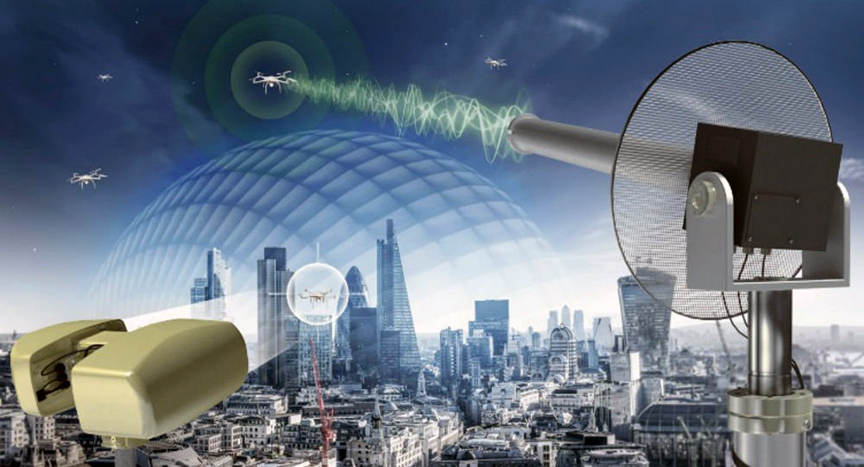
Protect Your Facility
Passive and active countermeasures can be integrated into the airspace security solution, depending on needs and capabilities. Together with detection from sensors, they secure the airspace security around your facility.
Passive and active countermeasures can be integrated into the airspace security solution, depending on needs and capabilities. Together with detection from sensors, they secure the airspace security around your facility.
Passive countermeasures protect your facility by leading people to safety, blocking sensitive areas from view, locking (cell) doors and gates, shutting down parts of the IT infrastructure, and searching for dropped objects.
Epiphany Operations works as an enhancement of traditional physical security systems or as a stand alone solution. Our solutions are available through equipment purchase and lease, adding your personnel trained by us, as autonomous solutions or as fully turnkey systems.
Infrastructure Drone Detection
Infrastructure Drone Detection – While energy manufacturers and utilities are implementing drone surveying and inspection programs around the world, these organizations must also protect critical infrastructure, such as power stations and water reservoirs, from unwanted drones. With drones becoming ever more inexpensive, easy to fly, and able carry heavy payloads, the risk of not securing the airspace only increases every day.

Recently, Infrastructure drone detection systems are being engaged to help defend against unwanted UAV incursions into secure areas already protected by conventional systems like radar, acoustic and optical detection systems. Secure areas include prisons, government buildings/facilities, utility companies (including nuclear power stations) and airports.
Pilot Locator
Infrastructure drone detection platform can automatically detect, locate and track UAV controls as well as locate the operator.
The UAV industry is quite mature, what’s still being developed are systems to enable autonomous drone flight. On the other hand, the maturity level of Infrastructure drone detection ranges from proven to embryonic.
As the UAV segment continues to grow, so does the need for detection and prevention of drone incursions.
Infrastructure drone detection employs three basic technology options: radar, optical and RF. Radar and optical need direct line of sight and cannot see over the horizon, which is short-range, and detection and defense must be exceptionally quick to prevent unwanted UAV visits.
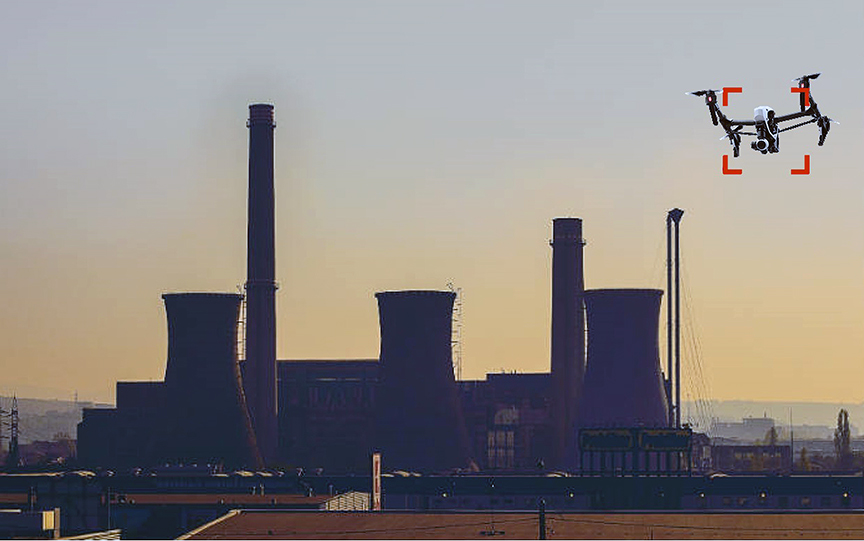
Intruder Warnings
Thus, intrusion warnings at a geofence distance of 1.5 miles can be generated, and automatic defense/prevention is readily achieved. Some utility companies want to have detection, warnings and control of intruder drones within a mile of their facilities.
Infrastructure drone detection uses a library of drone control RF signatures for all known UAS, with new signatures added regularly. The system can detect, intercept and directly take control of the offending vehicle.
- Protect critical infrastructure
- Detect drones even before they take off
- Provide forensic evidence of drone attacks
- Integrate into existing security and monitoring systems
- Are compatible with utilities’ internal drone programs
Epiphany Operations works as an enhancement of traditional physical security systems or as a stand alone solution. Our solutions are available through equipment purchase and lease, adding your personnel trained by us, autonomous solutions or as fully turnkey systems.

